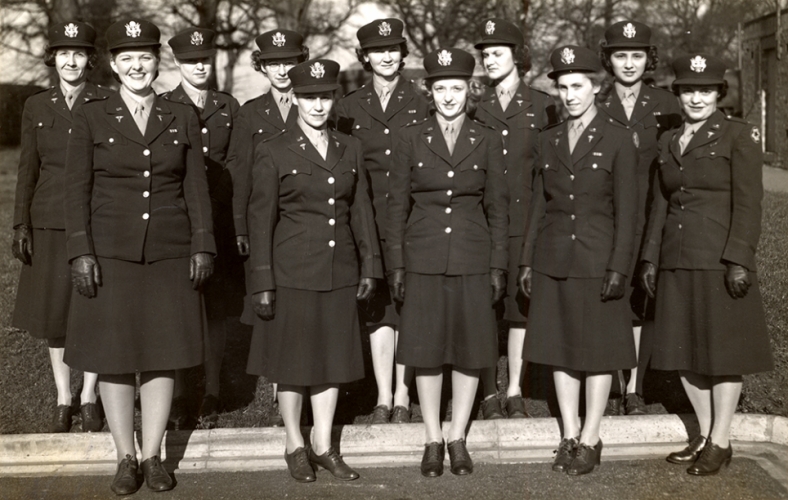
Albert Furstenberg
When the Nazis invaded Poland in 1939, Medical School Dean Albert Furstenberg began making plans for a general hospital at the front
As the Second World War intensified, millions of Americans were called for service in both Europe and the Pacific. Swept up along with these soldiers were the men and women of the University of Michigan's medical unit, the 298th General Hospital.
When the Nazis invaded Poland in 1939, Albert Furstenberg, dean of the Medical School from 1935-59, began formulating plans for a general hospital. Furstenberg organized doctors and nurses for military service training, preparing them for their roles of wartime caregivers.
The unit was called for duty soon after the December 7, 1941 attack on Pearl Harbor.
The 298th General Hospital spent 36 months abroad, caring for 43,000 patients during the war. The unit was comprised of 450 enlisted men, 83 nurses, 32 medical officers, 14 administrative officers, six dental officers, five Red Cross workers, two dieticians, and two physical therapists. All of the medical and dental officers and a third of the nurses and dieticians came from Michigan.
On October 20, 1942, the 298th departed from New Jersey, traversing the Atlantic to England. Orders soon placed the group in the South Gloucestershire village of Frenchay, a town outside of Bristol. Walter G. Maddock, associate professor of surgery and lieutenant colonel, called Frenchay, "this little bit of Michigan in England."
After several months of calm, the 298th began treating soldiers wounded in combat in North Africa. "It was a great thing for the unit to get down to the work of taking care of patients," said Maddock. Employing their months of training, the unit repaired fractured knees, broken ankles, and lacerations caused by shrapnel.
In mid-July of 1944 they traveled to Normandy's Utah Beach, treating Allied casualties throughout the summer.
With Buzz Bombs whizzing over their heads, the 298th moved to Liège, Belgium in October. Just 30 miles from the German border, the unit witnessed many soaring bombs en route to Antwerp or England.
Soon, however, the bombs began raining on Liège. One could hear the bombs falling for minutes before they pounded the earth; by mid-December they were coming so often the officers drew names from a hat, deciding who would remain at the camp should it ever be abandoned.
Around Christmas came a torrent of wounded soldiers-many were brought in from the Battle of the Bulge, occurring 60 miles south.
Over a 10-month period from November 1944 to September 1945, the unit admitted 22,983 patients.
The nurses and doctors worked tirelessly through the bombing barrage, trying to save as many lives as possible. Though an estimated 3,000 bombs flew over or struck Liège, none of these hit the 298th. The bombs killed none of its workers.
"Few general hospitals found themselves under enemy fire equal to that experienced by your unit during the siege of Liège," wrote Colonel C.H. Beasley.
Text from this story was adapted from James Tobin's article "Liege under Siege," originally published in "Medicine at Michigan."
Additional background information on the 298th is available from the Bentley Historical Library.